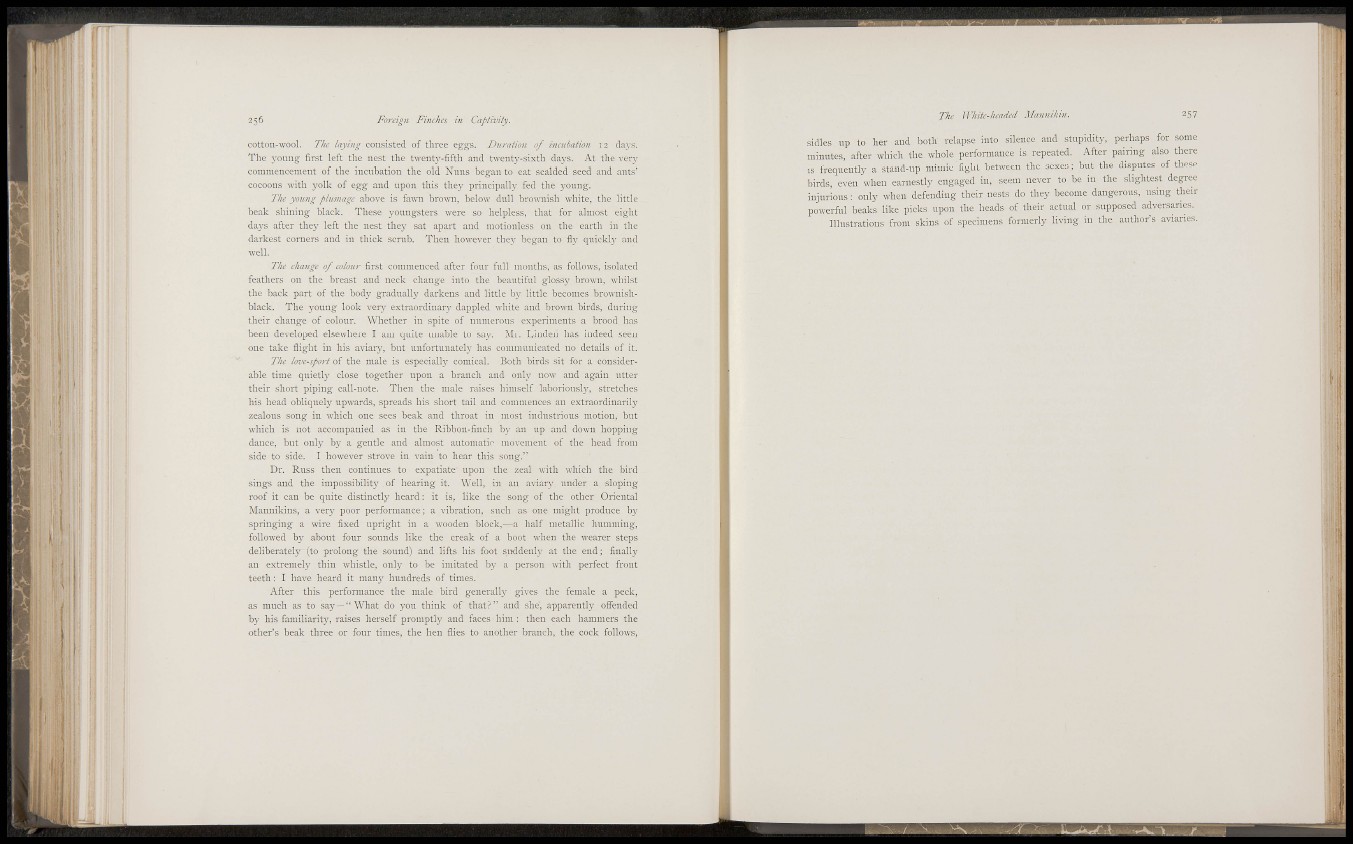
i' ' ;
i
cotton-wool. The laying consisted of three eggs. Duration of incubation i2 da\-s.
The young first left tlie nest the twent3'-fifth and t\ventj--sixth daj'S. At the very
commencement of the incubation the old Nuns began to eat scalded seed and ants'
cocoons with yolk of egg and upon this they principally fed the younj
The young plumage above is fawn brown, below dull brownish white, the little
beak shining black. These youngsters were so helpless, that for almost eight
daj'S after thejr left the nest they sat apart and motionless on the earth in the
darkest corners and in thick scrub. Then however the}.' began to fly quicklj- and
well.
The e/iange of colour first commenced after four full months, as follows, isolated
feathers on the breast and neck change into the beautiful glossy brown, whilst
the back part of the body gradually darkens and little by little becomes brownishblack.
The j'onng look ver}' extraordinary dappled white and brown birds, during
their change of colour. Whether in spite of numerous experiments a brood has
been developed elsewhere I am quite unable to say. Air. Linden has indeed seen
one take flight in his aviary, but unfortunately has communicated no details of it.
The love-sport of the male is especially comical. Both birds sit for a considerable
time quietl}' close together npon a branch and only now and again utter
their short piping call-note. Then the male raises himself laboriousl}', stretches
his head obliquelj^ upwards, spreads his short tail and commences an extraordinarily
zealous song in which one sees beak and throat in most industrious motion, but
which is not accompanied as in the Ribbon-finch by an up and down hopping
dance, but only by a gentle and almost antomatic movement of the head from
side to side. I however strove in vain to hear this song."
Dr. Russ then continues to expatiate upon the zeal with which the bird
sings and the impossibility of hearing it. Well, in an aviary under a sloping
roof it can be quite distinctly heard: it is, like the song of the other Oriental
Mannikins, a verj"- poor performance; a vibration, such as one might produce by
springing a wire fixed upright in a wooden block,—a half metallic humming,
followed bj' about four sounds like the creak of a boot when the wearer steps
deliberatehr (to prolong the sound) and lifts his foot swldenly at the end; finally
an extremely thin whistle, only to be imitated by a person with perfect front
teeth : I have heard it many hundreds of times.
After this performance the male bird generally gives the female a peck,
as much as to say-—"What do j'oii think of that?" and she, apparently offended
by his familiarity, raises herself promptly and faces him : then each hammers the
other's beak three or four times, the hen flies to another branch, the cock follows,
H 7/ ite-headed 'Man n ikin.
sidles up to her and both relapse into silence and stupidity, perhaps for some
minutes, after which the whole performance is repeated. After pairing also there
is frequently a stand-np mimic fight between the sexes ; but the disputes of these
birds, even when earnestly engaged in, seem never to be in the slightest degree
injurious : only when defending their nests do they become dangerous, nsing thenpowerful
beaks like picks upon the heads of their actual or supposed adversaries.
Illustrations from skins of specimens formerly living in the author's aviaries.
i; .i
I
1
i .